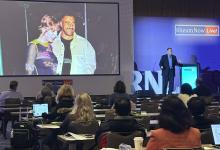Biosimilar Reports – October 2016 Save

RheumNow will periodically review this subject with “Biosimilar Reports” providing updates, news, new publications, overview articles and research results impacting to biosimilar development and use. Many of these items were compiled from news sources, journal articles and regulatory documents.
News
1. Three New Anti-TNF Biosimilars Approved. The big news thus far this year has been FDA approval of 3 biosimilars modeled after the 3 popular TNF inhibitors (TNFi) Enbrel, Humira and Remicade (See Table). The first approved was Celltrion’s' Inflectra (infliximab-dyyb) in April 2016. In August, Sandoz’s biosimilar, Erelzi, (etanercept-szzs), for the same multiple indications as the originator Enbrel, including rheumatoid arthritis, plaque psoriasis. Then last month, Amgen's biosimilar version of Humira, Amjevita was also approved based on clinical trials in rheumatoid arthritis (RA) and plaque psoriasis. To date, none of these agents are commercially available and do not have a formal launch date, owing to busy litigation regarding patent infringements between the parent biologic and new biosimilar manufacturers.
- Inflectra is approved for the treatment of adult and pediatric Crohn’s disease, adult ulcerative colitis, rheumatoid arthritis, ankylosing spondylitis and adults with plaque psoriasis. (http://buff.ly/2d6ss0T)
- Amjevita is approved for RA, juvenile idiopathic, psoriatic arthritis, ankylosing spondylitis, plaque psoriasis, adult Crohn’s disease, and adult ulcerative colitis.
- Erelzi is approved for rheumatoid arthritis, polyarticular juvenile idiopathic arthritis,
psoriatic arthritis, ankylosing spondylitis and plaque psoriasis.
2. Samsung’s pipeline includes biosimilars of the top 3 TNF-alpha inhibitors: Enbrel (called ‘Lenflexis’); Remicade (called ’Brenzys’); and Humira (called ‘SB5’).
3. Numerous companies are seeking to develop the pegylated biosimilar of filgrastim (pegfilgrastim). The filgastim biosimilar, Zarxio, was FDA approved in 2015. The FDA in 2016 rejected Sandoz’s application for Pegfilgrastim. Currently, Mylan, Biocon, Sandoz, Richter, and Coherus have submitted applications to the EMA or are doing trials. http://buff.ly/2d6ilcz
Journal articles
1. CT-P10 rituximab biosimilar in rheumatoid arthritis. 110 RA patients enrolled and showed similar pharmacokinetics, efficacy, pharmacodynamics, immunogenicity and safety between CT-P10 and RTX. http://buff.ly/2dvKSsG
2. The Changing Landscape of Biosimilars in Rheumatology. http://buff.ly/2dyaXGQ
3. Critical Review of Biosimilars in IBD. http://buff.ly/2d6ww12
4. Biosimilars: A Multidisciplinary Perspective. http://buff.ly/2dVCYXF
Overviews & Reviews
1. Biosimilar Adoption: The global biologic drug market will be worth $390 billion by 2020 with increasing demand over time driven by more introductions into the market. Biosimilars were first approved in the European Union (EU) in 2006 and were first approved in the U.S. in 2015. Now there are hundreds of biosimilars approved globally. With up to 12 biologics expiring by 2020, it is estimated that the global biosimilars market could reach $25-$35 billion by 2020. Currently there are 70 programs in clinical trials or later - 11 approvals in EU, three in the U.S., and 44 programs in pivotal developmental trials. The question is whether these biosimilars will alleviate or address and unmet need in the USA and EU. The EU experience of biosimilar adoption has been positive in the last 10 years. But it is unknown what the effect of deep discounts (2/3 in Norway) and restricted formularies were in this evolution. This review article goes on to address the issue of interchangeability (and how insurers may be defining this ahead of the FDA) and reviews biosimilars in emerging markets and the changing regulations on biosimilars. http://buff.ly/2dVBj4r
2. IMS Report on the Growth and Potential of Biosimilars: a good long report with graphics http://buff.ly/2dOqUWY
3. Six Factors Driving Global Biosimilar Market Growth: The biosimilar market is expected to grow from $1.7 billion (2014) to $30 billion by 2020. The launch of Remicade and Enbrel biosimilars was anticipated in 2016, but may not be till 2017. While the U.S. is the largest biologics market globally, it currently accounts for only a small part of the global biosimilars market. This article details the factors that will drive biosimilar growth, including: loss of patents; patient and physician issues (like efficacy, safety, interchangeability); incentivized programs; and others. http://buff.ly/2dOqHTD
Regulatory
1. Naming Biosimilars – The FDA has proposed a four-letter suffix to distinguish between a biosimilar and its reference product, similar to the “biological qualifier” proposed by the World Health Organization (WHO). http://buff.ly/2d6DkMg
The FDA has published draft guidance on biosimilar naming. In the draft guidance, they note that each suffix should be unique to each product and carry no meaning. The naming proposal is designed to prevent inadvertent substitution of biologics and make pharmacovigilance for biosimilar products easier. Whether the suffix is distinguishable (Sandoz’s etanercept-szzs) or meaningless (Celltrion’s infliximab –dyyb) is a subject of debate within Pharma. The FDA wishes to avoid suffixes that identify the manufacturer (like AMGN for Amgen) that may infer a better product. The goal is to create a more level playing field, but others in industry view the random letter approach as a missed opportunity- identify the manufacturer, the location, which biosimilar it is-whether it is the first, the second or the third.
2. Sandoz's biosimilar of rituximab accepted for regulatory review in the EU http://buff.ly/2dOlNpF
3. FDA Receives Comments from Industry on “interchangeability”. http://buff.ly/2dOCVvt
4. FDA Hearing on Biosimilar User Fee Act. The FDA will hold a public meeting on 10/20/16 on the reauthorization of the Biosimilar User Fee Act (BsUFA) for fiscal years (FYs) 2018 through 2022. BsUFA authorizes FDA to collect fees and use them for the process for the review of biosimilar biological product applications. http://buff.ly/2dO6rRY
5. EMA Adopts New Guidance on Biologics and Biosimilars: EMA has announced new recommendations for monitoring the safety of biologics and biosimilars. The guidance will take effect on 16 August 2016 and are part of the EU good pharmacovigilance practice guidelines. http://buff.ly/2dVIWeP.
6. Merck Canada announces approval of etanercept biosimilar Brenzys (SB4) from Health Canada - 12 September 2016. http://buff.ly/2dvKESo.







If you are a health practitioner, you may Login/Register to comment.
Due to the nature of these comment forums, only health practitioners are allowed to comment at this time.